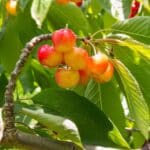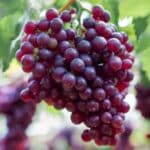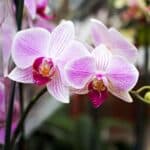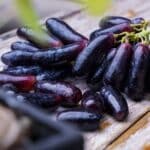Cherry plums are hybrid fruits - a cross between plums and Cherries originating from Central Asia is one sweet fruit that deserves the spotlight. From Asia, its juicy goodness has spread to Central Europe with the same excellent feedback on its great taste.
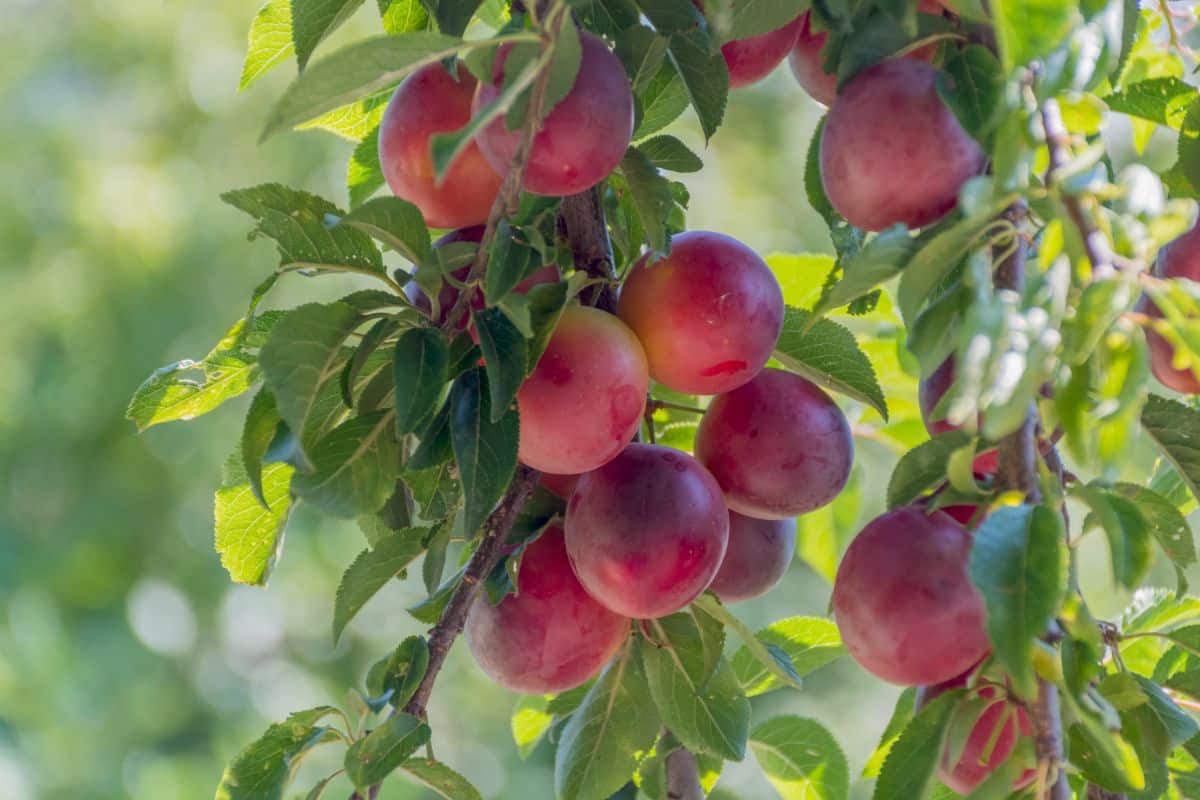
Many people tend to mistake the cherry plum plant for a Mirabelle plum. Even though they bear some similarities, the difference is still as clear as day.
One brilliant way of distinguishing between them is by their color; Cheery plums are red-colored, while Mirabelle plums are yellow, sometimes with slight red markings.
Other names the cherry plum goes by are "myrobalan" or wild Mirabelle. Their trees grow more in width than in height, developing different stemmed crowns as they do.
In this cherry plum growing guide, we will teach you how to care for this plant, and we will also discuss the various cherry plum varieties!
Jump to:
- Cherry Plums Growing Guide + Variety Info
- Choosing A Planting Site
- Soil Requirement
- Light Requirement
- Watering Requirements
- Temperature Requirements
- Fertilization Application
- Pruning Requirements
- Propagation Techniques
- Harvesting Techniques
- Pest And Disease Control
- Closest Varieties Of The Cherry Plum Plants
- Frequently Asked Questions
- Final Note
Cherry Plums Growing Guide + Variety Info
Cherry plums are fast-growing, but their plants are short-lived, having a life span of fewer than two decades.
They are early bloomers, too; usually, they are one of the first braids to start flowering; then, blooming takes place in early February in locations like the UK and Europe.
The other variant of cherry plum trees is planted mainly for ornamental uses. The trees offer brilliant purple foliage and light pink or white sweet-scenting flowers.
Another great advantage of growing cherry plums is that they produce food for many insects that might not have available food sources.
Find below the key aspects of growing this spectacular tree.
Choosing A Planting Site

When deciding on a planting site for your Cherry plum plants, you must think of a location in which they can get to enjoy the full sun and at the same time stay shielded from strong winds.
In summary, a sunny spot where they will not be bothered by strong winds is ideal.
Cherry plums are hardy plants and can withstand certain forms of discomfort, but it is better to keep them safe from strong winds as that may affect their growth in one way or another.
Soil Requirement
Cherry Plum is not so picky about soil. You can use just about any soil apart from clay to grow them. However, there is a particular condition you must see to - that is to ensure that the soil is permeable but not too sandy.
In order words, a moist, well-drained, sandy loam acidic soil rich in organic matter with a pH range of 6 - 8 will be okay for your cherry plum plant.
A quick note is to never plant your cherry plum in a spot where alkaline and salt are concentrated. Clay soil, too, is a complete fail for your cherry plum plant.
Light Requirement
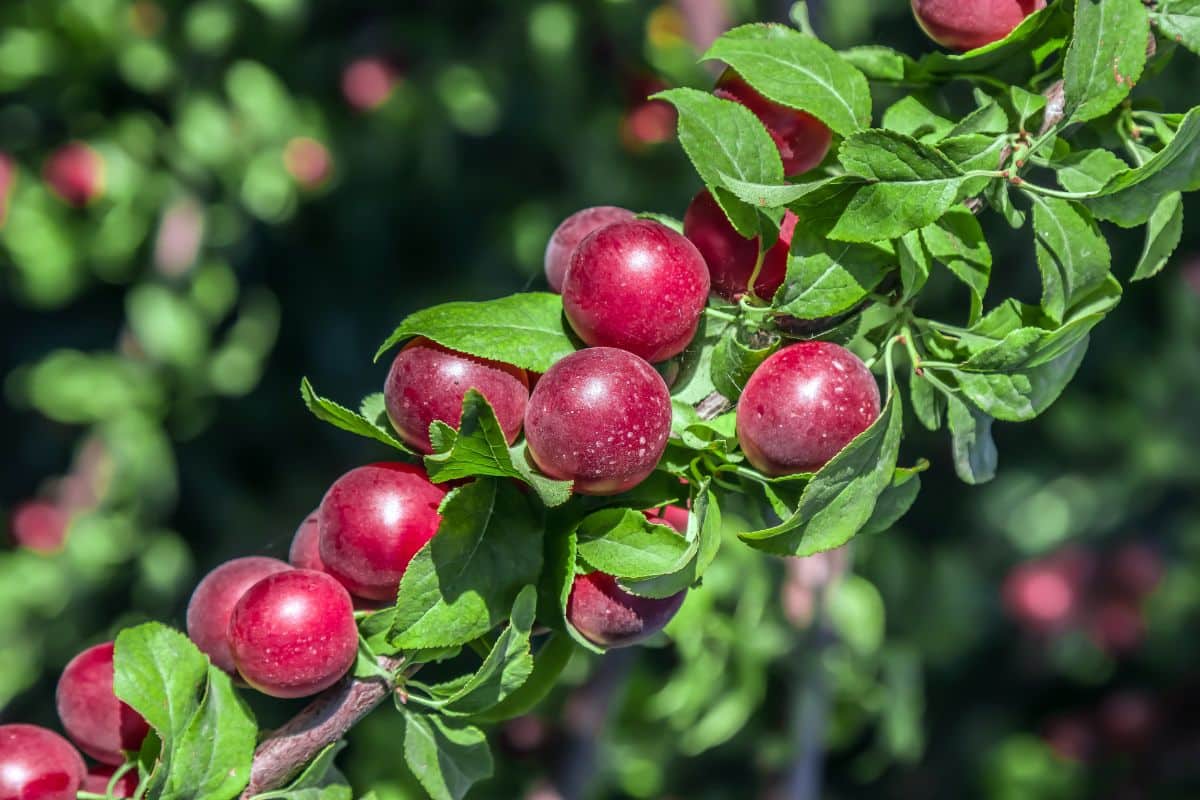
Cherry plum plants naturally need full sun or light shade to grow optimally. Sufficient sunlight for this plant is required for photosynthesis in its growth.
At least 6 hours of sunlight is needed, and light shade in the hot afternoon sun.
Watering Requirements
Cherry plum plants are not precisely thirsty plants, but in their active growing phase, they should be periodically watered. Watering them at this tender stage will see their roots fully developed and firmly established.
Afterward, the plants will not need frequent watering except in overly dry seasons.
To be on the safe side, the frequency of watering should be done based on three things only: the level of dryness of the soil, the same phase of the plant’s growth, and the weather condition.
Temperature Requirements
Cherry Plum plants will naturally thrive through low-temperature conditions. Generally, the plant can tolerate a temperature level of -22°C - 42°C.
Fertilization Application
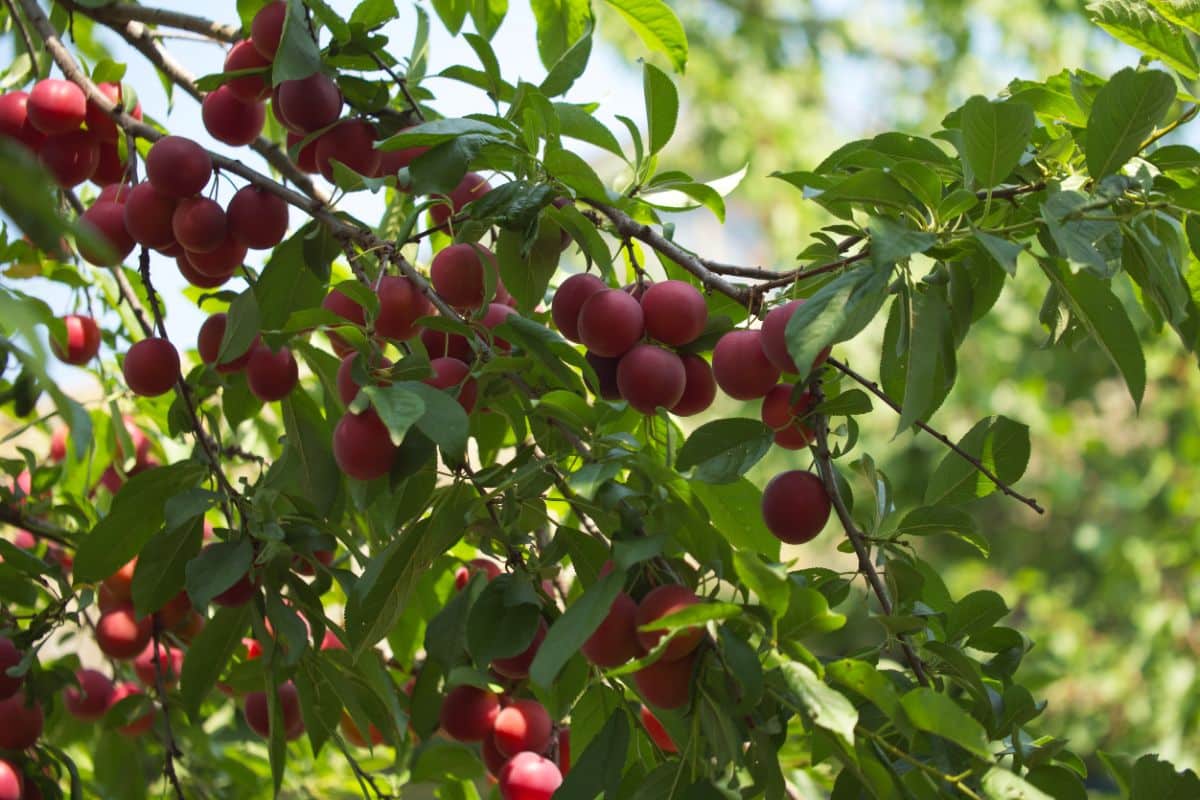
Due to their non-problematic, hardy nature, you will not need to feed the cherry plum plants further with fertilizer. They are low-maintenance plants that can comfortably grow independently with minimal care and attention.
If you still feel like applying fertilizer, then you must see that you do not use one that is rich in nitrogen.
We recommend using just compost or a compelling brand of All Purpose Plant Food for the best results.
Apply fertilizer just twice a year; before bloom to provide its flowers with adequate nutrients and when the fruits increases in size to make for an increase in their eventual yield.
Pruning Requirements
Is it necessary to prune your cherry plum plants? Highly necessary. The benefits of pruning your plants are enormous; it helps maintain a neat outlook for them, sees that withered or infected branches are pruned out, and keeps them in top shape.
For the cherry plum plant, pruning can be done yearly for relatively young trees or once every 2 - 3 years for older plants.
A highly strategic time to prune the plant will be just after flowering. You are to aim for infected, dead, or damaged branches to cut off, leaving just the healthy wood to make for a much greater yield.
Pruning helps maintain the trees’ shape, aids adequate air circulation, and ample light exposure.
Propagation Techniques
An excellent way to propagate the cherry plum plant is by grafting. This is a process whereby about four developed buds are taken and inserted into a cut opening in the stock, then tied tightly with a plastic wrapping.
They must remain tied for at least ten days to ensure the cut heals before the wrap can be loosened.
Harvesting Techniques
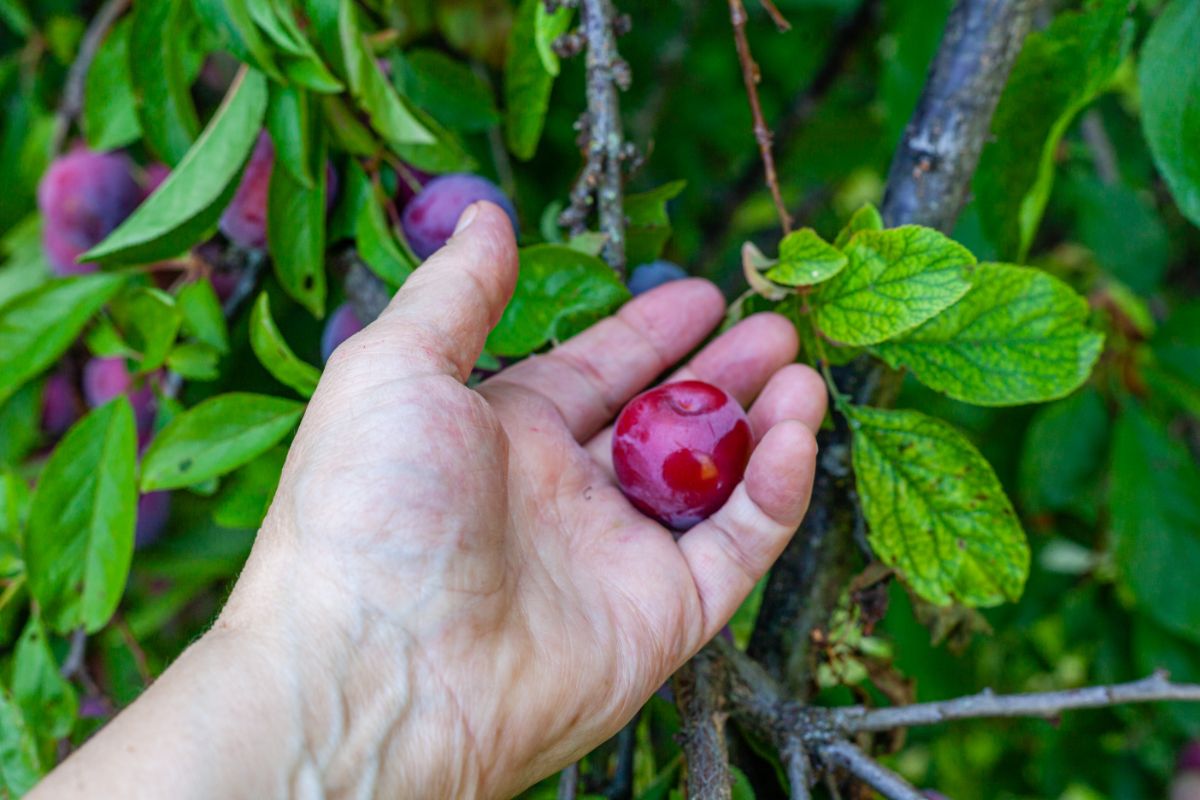
The Cherry plum's maturation stage will largely depend on the particular variety and, perhaps, the right growth conditions. Some will ripen early in June, others later in September, like the 'Zloty Oblok.'
All in all, you can always get to tell when the fruits are ripe enough for harvesting just by judging by the color transformation.
A reliable indication of harvest time is when the fruits are fully colored. They can then be plucked out to prevent the pulp from getting powdery.
Certain crops of people, mainly in Turkey, harvest and consume the cherry plum while they are still green and yet to be fully colored. They call it green plums.
Pest And Disease Control
Cherry plum plants are highly susceptible to pests and diseases. It explains why they do not have a prolonged lifespan.
You will also find various insects and birds feast on its delicious fruits, leaving bites and marks on them.
These pests include Twig blight which affects the leaves on the branches, making them wilt and die, Anthracnose which comes about due to fungi that thrive in winter, harming the leaves and gender branches, Spider mites that destroy feed and sap of growing buds, aphids that also feed on the plant and forms insect galls and a host of other pests or diseases the cherry plum plant is susceptible to.
You can, however, keep them away by having your trees covered with a net and sprayed periodically with a potent fungicide.
On the whole, though, growing the cherry plum plants under the right conditions that they crave will see a reduction in the attack of pests on the tree.
Closest Varieties Of The Cherry Plum Plants
1. 'Zloty Oblok'

This variety is delicious and juicy, just like cherry plums. When grown, the trees do not produce large, never extending beyond 4 - 6m.
You know the 'Zloty’ blocks are ripe enough for harvesting, usually in September, when they become yellow.
This fantastic variety is native to Poland and bears some striking similarities with Mirabelles.
2. "Nigra"
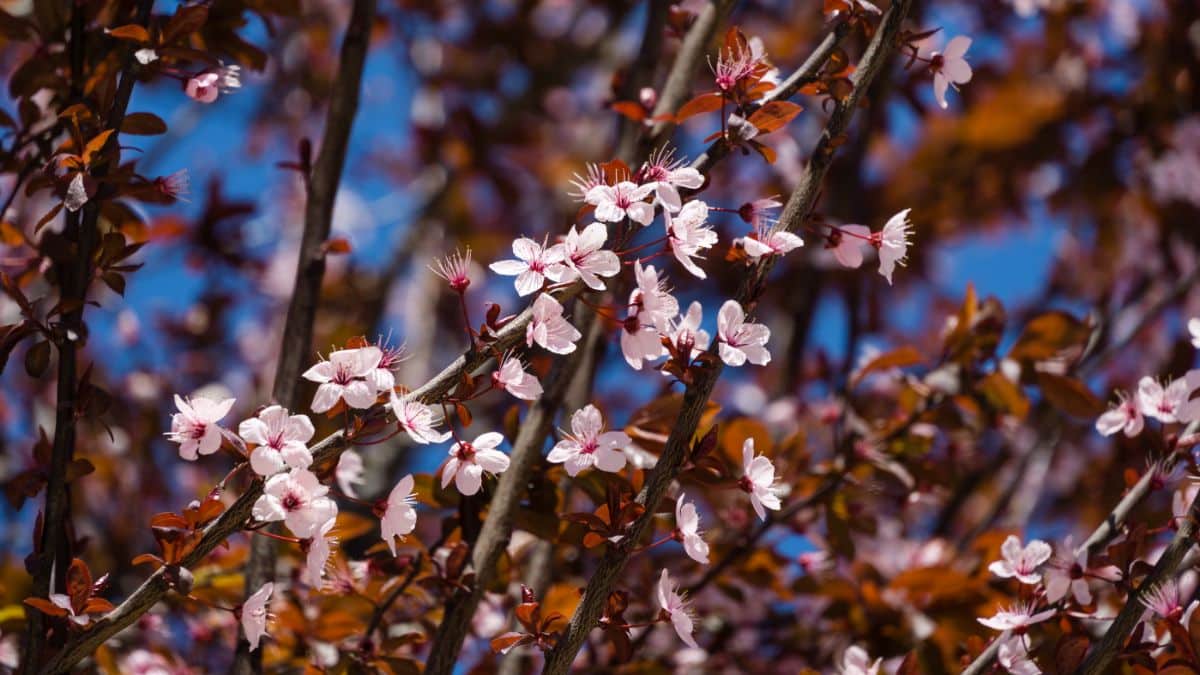
Nigras are dark red-colored fruits that usually ripen in August. The tree has gorgeous pink flowers and deep red foliage.
Nigras are very sweet and make great alternatives to the cherry plum plants.
3. Trailblazer/Hollywood
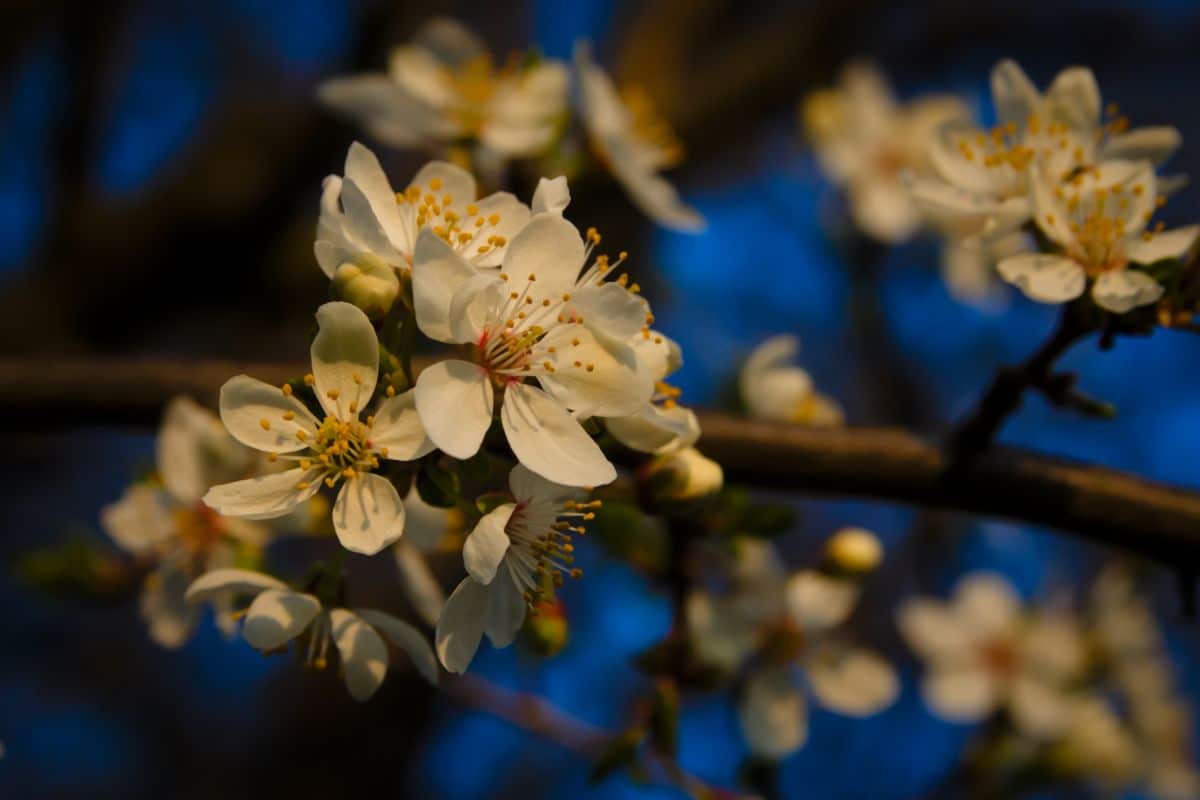
The main feature of this variety is the large-sized fruits it bears. These fruits are as big as 5cm in diameter. When they get ripe, usually in September, the fruits spot a burgundy color, looking pretty against its reddish-brown foliage.
Frequently Asked Questions
How Many Types Of Cherry Plum Trees Are There?
This can get quite confusing, but our explanation below is sure to clear it all up.
There are two types of cherry plum trees. These two trees bear some similarities but cannot be said to be the same.
The first Cherry Plum tree is known scientifically as Prunus cerasifera with USDA Hardiness Zones: 4 - 8. They are native to the Asians, who also call them Cherry plums.
They are more decorative tress to Asians than fruit-producing ones. Although, when paired with a pollinator, they might have some fruits.
The other is a hybrid fruit, a cross between plums and cherries recently developed and released into the market. This cherry plum tree produces fruits that are smaller in size than plums but larger than cherries.
Now, the significant similarity lies in the fact that both cherry plum trees can produce fruit; however, what sets them apart is the Prunus cerasifera produces fruits only with the help of a nearby pollinator coupled with the fact that the fruits they have are just plums with no feature of cherries whatsoever.
Why Are My Cherry Plum Leaves Turning Yellow?
This can be attributed to several reasons like inadequate sunlight, sunburn, or soil lacking nutrients/dry soil.
Pests and diseases might attack for another reason, but they often leave marks to show they are responsible.
Either way, if the leaves are infected, have them cut off and the plant treated with fungicide.
Final Note
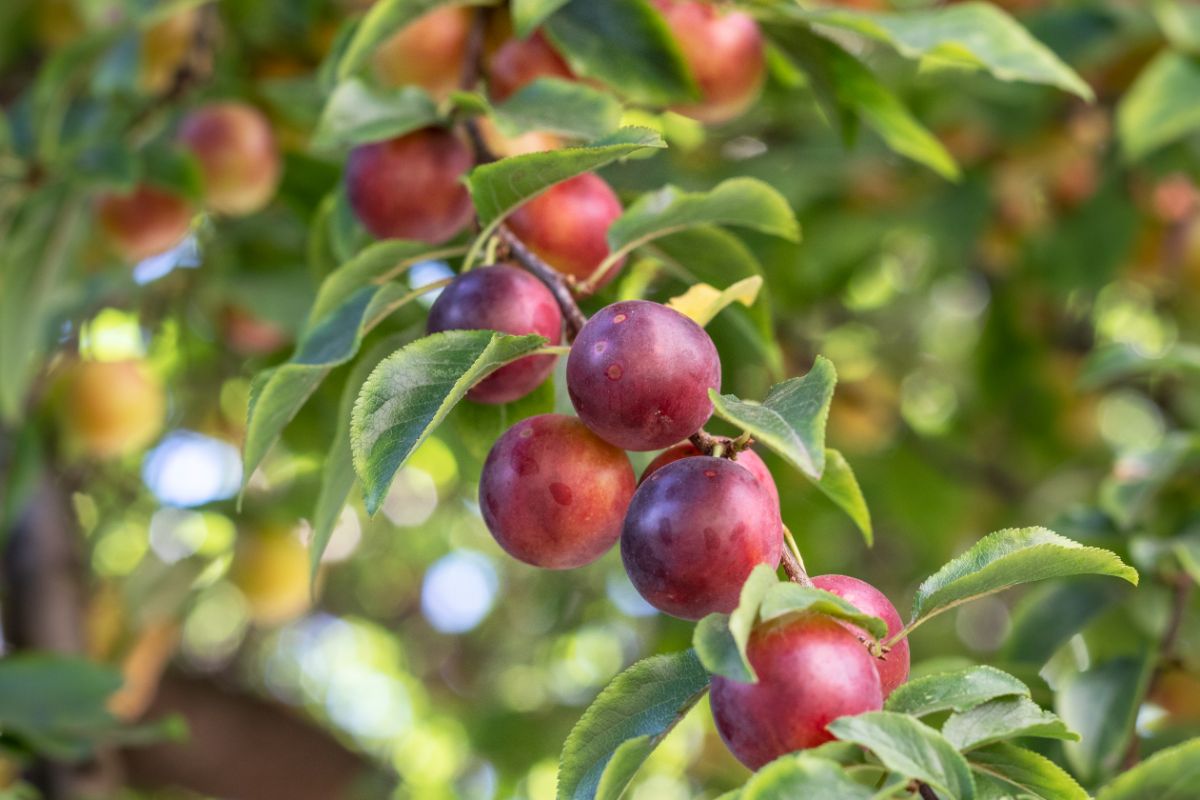
Cherry plums - the round and small-sized fruit that is packed heavily with a trailer load of sweetness.
The sweet flavor and tart aftertaste combination that we enjoy when we bite through its golden interior is second to none.
With this comprehensive growing guide, you can have them planted conveniently, having them produce their sweet-tasting fruits for your pleasure.

